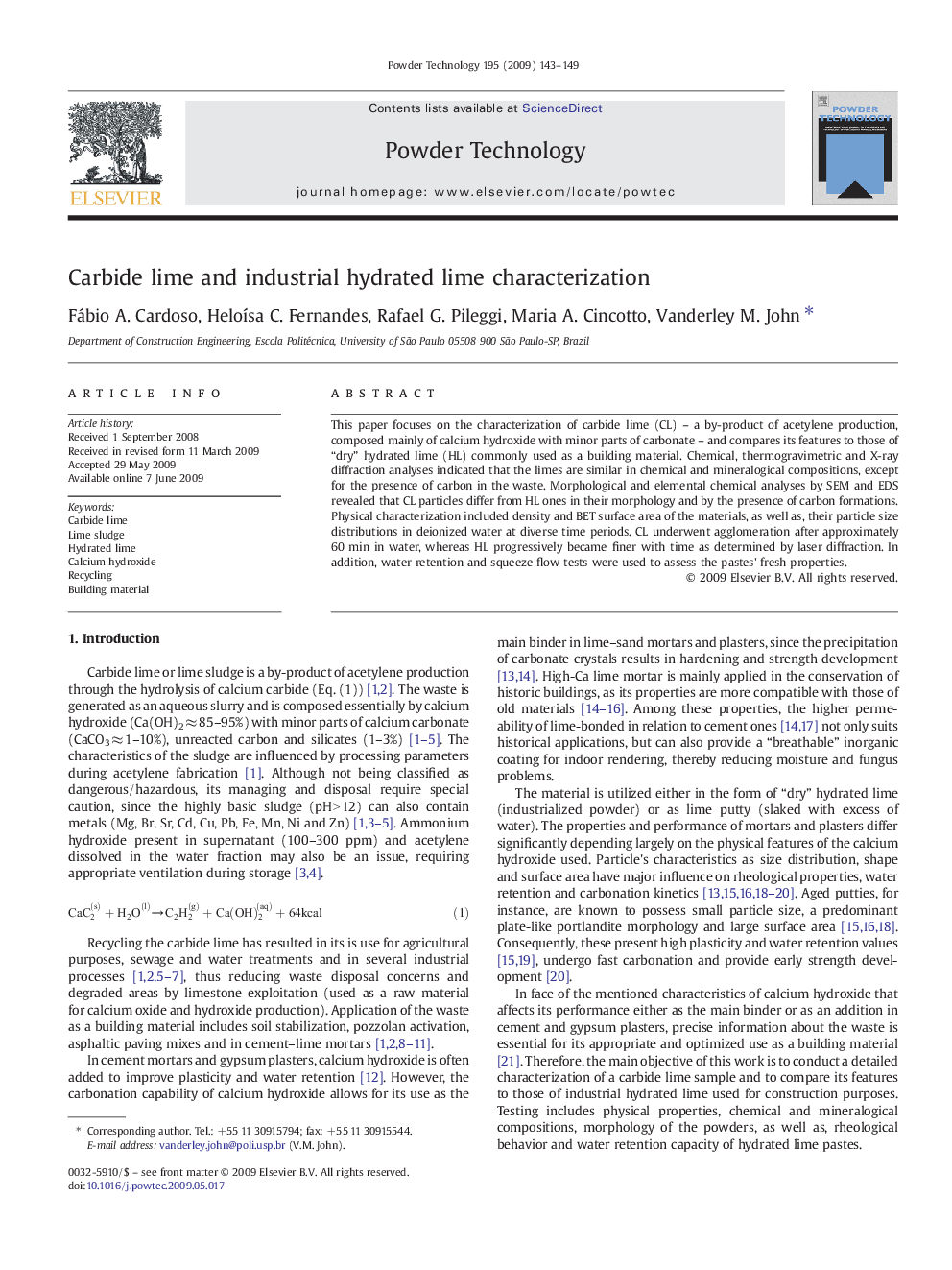| Article ID | Journal | Published Year | Pages | File Type |
|---|---|---|---|---|
| 238222 | Powder Technology | 2009 | 7 Pages |
This paper focuses on the characterization of carbide lime (CL) – a by-product of acetylene production, composed mainly of calcium hydroxide with minor parts of carbonate – and compares its features to those of “dry” hydrated lime (HL) commonly used as a building material. Chemical, thermogravimetric and X-ray diffraction analyses indicated that the limes are similar in chemical and mineralogical compositions, except for the presence of carbon in the waste. Morphological and elemental chemical analyses by SEM and EDS revealed that CL particles differ from HL ones in their morphology and by the presence of carbon formations. Physical characterization included density and BET surface area of the materials, as well as, their particle size distributions in deionized water at diverse time periods. CL underwent agglomeration after approximately 60 min in water, whereas HL progressively became finer with time as determined by laser diffraction. In addition, water retention and squeeze flow tests were used to assess the pastes' fresh properties.
Graphical abstractCarbide lime waste, a by-product of acetylene production, and industrial hydrated lime were investigated. The materials are similar in chemical and mineralogical compositions, mainly composed by Ca(OH)2 with minor portions of CaCO3, except for the presence of carbon as graphite particles and amorphous films in the waste. Morphological differences between the hydroxide clusters of each material were identified by SEM.Figure optionsDownload full-size imageDownload as PowerPoint slide
